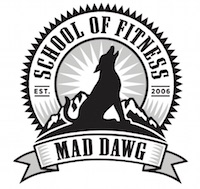Rocking is an exercise I learned at the recent Original Strength workshop that Wes and I attended in late September. There are a number of reasons that we use it, but the primary reason is that it helps an athlete become aware of what muscles she/he has to work to keep the rib cage entered over the pelvis and keep the spine neutral.

Above is the image I mention in the video. The take away here is that to keep the hips centered underneath the ribs, the athlete has to be able to rotate the hips forward and backward as he/she moves through the squatting sequence. As the hip rotates forward (anteriorly) on the decent of the squat to accommodate the forward lean of the torso, it is important to see that while the Erectors (they are a group, not just one as the name implies), Iliopsoas (also two muscles, not one) and Rectus Femoris all have to contract to get anterior tilt, also remember that the posterior tilting muscles (Gluteus Maximus, Rectus Abdominis, Hamstrings, again there are more than one, and the external obliques), all have to let go or extend at the same rate as the contracting muscles to keep the hip stable. All of the opposing muscles responsible for posterior tilt have to remain taut and tensioned even when they are extending. When the athlete tilts his/her hips forward at the beginning of the squat and “hangs out at the end of the range of motion,” the posterior tilting muscles tend not get loaded though the full range of motion. The result from lack of tension in both directions of the squat can be muscle imbalances and nagging injuries that just don’t go away in the knee, hip or lower back. You can also feel it most clearly in your quads or knees on longer hikes when there is sustained downhill at the end of the hike. Try the rocking at home and see if you can feel your abs engaging at the bottom and top, if you don’t, you might not be keeping your spine neutral. See what you can do to feel you abs slowly come on as you move you hips towards your feet and then as you move you shoulders over your hands.
If you don’t still can’t get it, ask one of the coaches or make a movement therapy appointment with Saul (Special appointments -> Movement Therapy for Mad Dawg Members).
